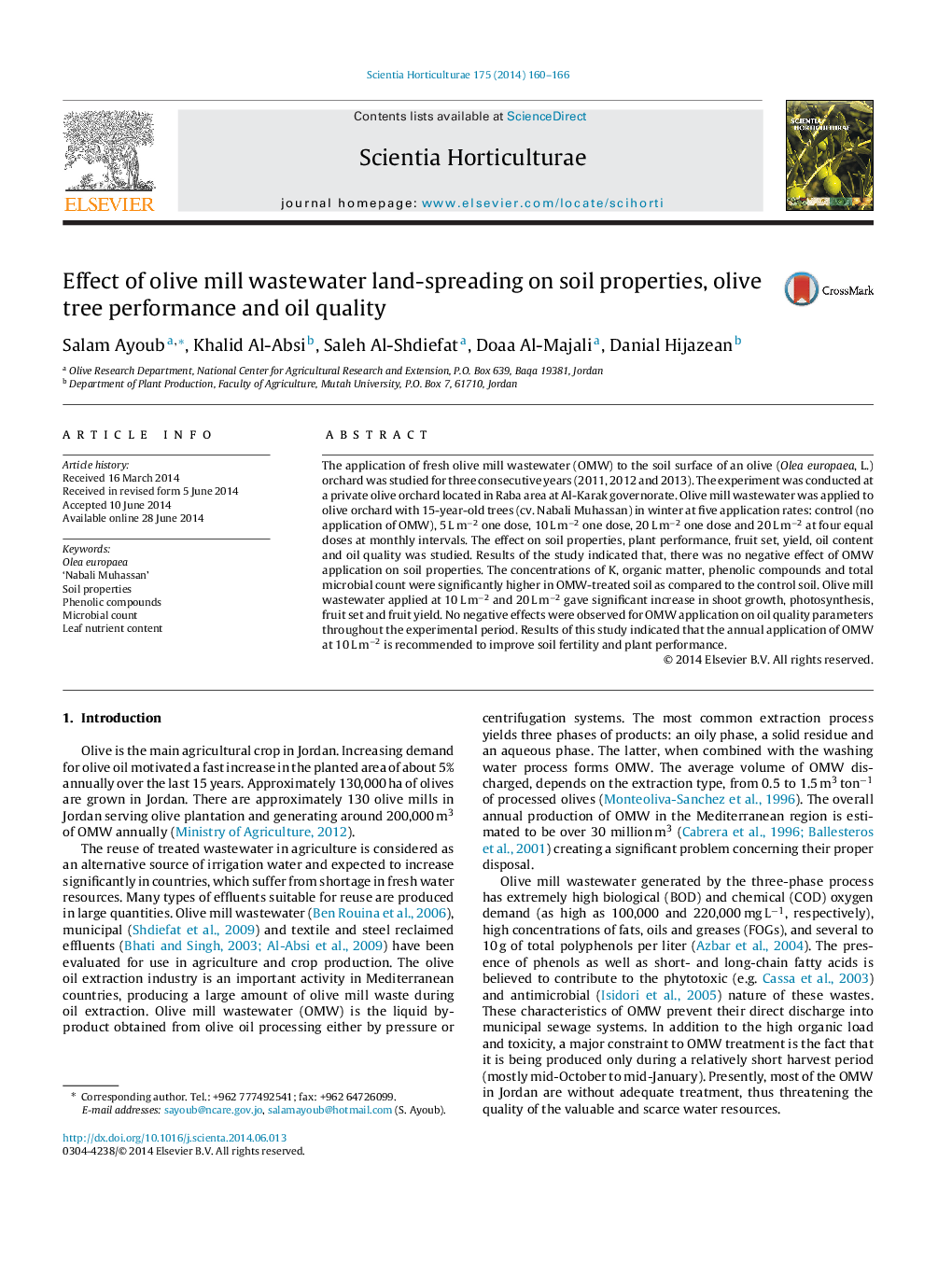| Article ID | Journal | Published Year | Pages | File Type |
|---|---|---|---|---|
| 4566664 | Scientia Horticulturae | 2014 | 7 Pages |
•The application of olive mill wastewater (OMW) to the soil surface of an olive orchard was studied.•There was no negative effect of OMW application on soil properties.•The concentrations of K, organic matter, phenolic compounds and total microbial count were higher in OMW-treated soil as compared to the control soil.•No negative effects were observed for OMW application on oil quality parameters.•Annual application of OMW at 10 L m−2 is recommended to improve soil fertility and plant performance.
The application of fresh olive mill wastewater (OMW) to the soil surface of an olive (Olea europaea, L.) orchard was studied for three consecutive years (2011, 2012 and 2013). The experiment was conducted at a private olive orchard located in Raba area at Al-Karak governorate. Olive mill wastewater was applied to olive orchard with 15-year-old trees (cv. Nabali Muhassan) in winter at five application rates: control (no application of OMW), 5 L m−2 one dose, 10 L m−2 one dose, 20 L m−2 one dose and 20 L m−2 at four equal doses at monthly intervals. The effect on soil properties, plant performance, fruit set, yield, oil content and oil quality was studied. Results of the study indicated that, there was no negative effect of OMW application on soil properties. The concentrations of K, organic matter, phenolic compounds and total microbial count were significantly higher in OMW-treated soil as compared to the control soil. Olive mill wastewater applied at 10 L m−2 and 20 L m−2 gave significant increase in shoot growth, photosynthesis, fruit set and fruit yield. No negative effects were observed for OMW application on oil quality parameters throughout the experimental period. Results of this study indicated that the annual application of OMW at 10 L m−2 is recommended to improve soil fertility and plant performance.
